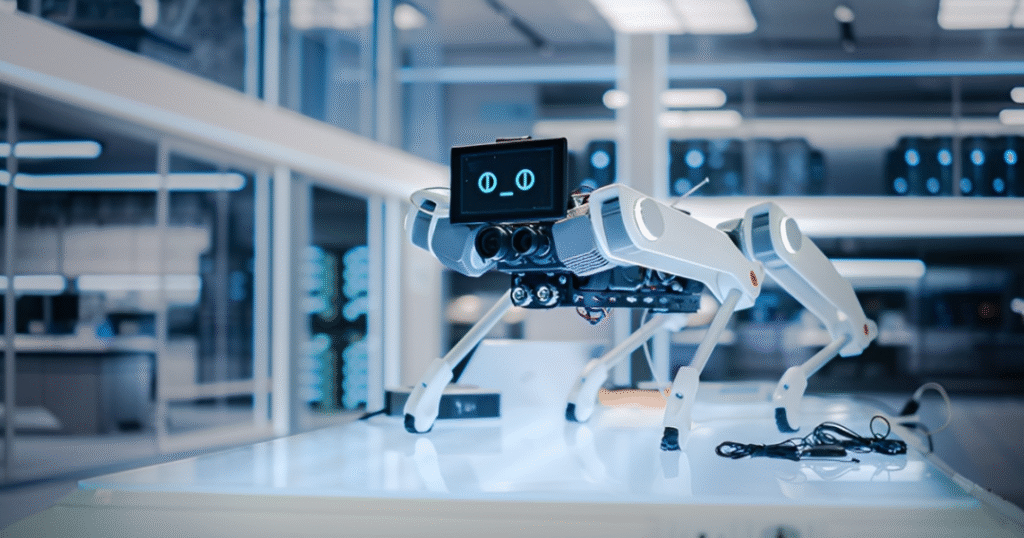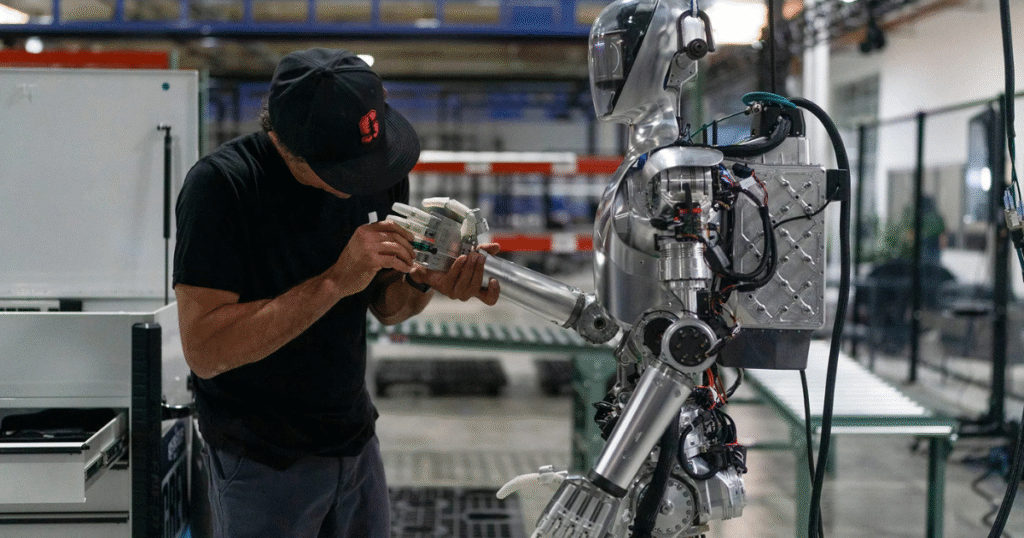Welcome to this week’s look at the big stories in LiDAR and robotics. In this weekly lidar robotics news roundup, we cover the main updates that show how these fields are moving forward. From new tech releases to company deals, lidar robot news this week brings fresh ideas that could change how machines see and work in our world. As we head into the rest of 2025, these changes point to more use in cars, factories, and daily life. Let’s break down what stands out.
What is LiDAR and Why Does It Matter in Robotics?
Before we get into the details, it’s good to recall what LiDAR is. LiDAR stands for Light Detection and Ranging. It uses laser light to measure distances and build maps of areas around it. Think of it as a way for machines to “see” in 3D, much like how radar uses sound waves, but with light for better detail.
In robotics, LiDAR helps robots move safely and do tasks on their own. For example, self-driving cars use it to spot roads, other vehicles, and people. Factory robots rely on it to pick up items without bumps. Even home devices like robot vacuums use simple LiDAR to avoid walls and furniture. Without it, many robots would struggle in real settings.
The robotics week roundup 2025 shows LiDAR getting smaller, cheaper, and smarter. This means more robots can use it, from big trucks to small helpers. Market reports say the LiDAR field will grow a lot, with sales expected to hit $3 billion by the end of this year. That’s up from about $2 billion last year, driven by needs in cars and robots. This growth comes from better tech that cuts costs and boosts how well it works.
Now, let’s turn to the key stories from this week.
Recent Advances in LiDAR Technology
This week saw several new LiDAR products and updates. Companies are pushing for better range, smaller sizes, and lower prices to fit more uses.
Hesai’s Next-Gen High-Performance LiDAR at IAA Mobility
One big highlight in lidar robot news this week is Hesai’s show at the IAA Mobility event in Munich. They revealed new LiDAR models set for mass making in 2026. These units promise longer range and clearer views, key for self-driving cars and robots.
Hesai, a top player in LiDAR, focuses on making sensors that work well in tough spots like bad weather or busy streets. Their new line includes models with over 300-meter range, which is great for highway trucks or outdoor robots. Mass production means these could soon be in more vehicles, cutting costs for buyers.
What does this mean for robotics? Better LiDAR helps robots handle complex jobs, like warehouse picking or farm mapping. If robots can see farther and clearer, they make fewer mistakes, saving time and money. Hesai also won a deal to supply short-range LiDAR for Motional’s all-electric IONIQ 5 robotaxi, showing their tech in real use.
Orbbec’s Pulsar ME450: A New Kind of 3D LiDAR
At the World Robot Conference 2025, Orbbec launched the Pulsar ME450, the first multi-pattern 3D LiDAR that mixes MEMS tech with other methods. This sensor can switch scan patterns to fit different needs, like wide views for mapping or tight beams for spotting small items.
The Pulsar ME450 is built for commercial and outdoor robots. It handles dust, rain, and bright light better than older models. With a mix of patterns, it gives flexible use without needing many sensors.
For robotics, this could mean cheaper setups. Instead of buying separate LiDAR for each task, one unit does it all. Think of a delivery robot switching from street navigation to close-up package handling. This fits the trend of making robots more versatile for everyday jobs.
RoboSense Starts Big Deliveries of EMX LiDAR
RoboSense kicked off large shipments of their EMX LiDAR this week. Since starting the EM platform early in 2025, they’ve locked in deals with eight big car makers for 45 models. The EMX offers high detail and long range, ideal for self-driving tech.
In the weekly lidar robotics news roundup, this stands out because it shows LiDAR moving from tests to real roads. RoboSense’s focus on AI helps the sensor learn from data, getting better over time. For robots, this means systems that adapt to new places without much setup.
RoboSense also shared their AI robotics plan at a global event. They aim to blend LiDAR with robot brains for smarter actions, like avoiding crowds or picking paths. This could speed up robot use in stores or hospitals.
Sunseeker’s LiDAR Robotic Mower Sets New Standards
Sunseeker brought out a robotic mower with LiDAR for better lawn care. It uses AI to map yards and cut grass without wires or markers. The mower spots obstacles like toys or trees, making it safe for homes.
While not as big as car tech, this shows LiDAR reaching consumer items. In robotics, it points to more home helpers using advanced sensors. Imagine mowers that learn your yard’s layout and adjust cuts based on growth. This could grow the market for small robots, making them common in daily life.
Key Developments in Robotics
Robotics saw its share of news this week, with new models and uses. These tie closely to LiDAR, as many robots use it for seeing.
Ati Motors’ Sherpa 10K and Sherpa Mecha AMRs
Ati Motors held their Product Day 2025, showing the Sherpa 10K and Sherpa Mecha. These autonomous mobile robots (AMRs) handle heavy loads in factories or warehouses. The Sherpa 10K lifts up to 10,000 pounds, while the Mecha adds tools for custom jobs.
In robotics week roundup 2025, AMRs like these are key for cutting labor costs. They use LiDAR to map spaces and avoid hits. Companies can set them for tasks like moving parts or stocking shelves. This fits the push for automation in places short on workers.
Kraken Robotics Buys 3D at Depth for Underwater LiDAR
Kraken Robotics picked up 3D at Depth, a firm focused on subsea LiDAR. This deal boosts Kraken’s tools for ocean mapping and robot use underwater.
Underwater robotics is growing for oil rigs, ship checks, and sea research. LiDAR here helps see through water where cameras fail. The buy means better tech for deep-sea robots, like those fixing cables or exploring wrecks. It’s a step toward more ocean work done by machines.
Aeva’s Deal with Daimler Truck for Autonomous Trucks
Aeva grew its partnership with Daimler Truck North America for self-driving trucks. They’ll use Aeva’s 4D LiDAR, which adds speed data to distance measures. This helps trucks react faster on roads.
For robotics, truck autonomy could change shipping. Less driver time means lower costs and fewer crashes. Aeva plans to make up to 200,000 units a year, showing scale-up. This lidar robot news this week highlights how sensors drive big changes in transport.
LG’s $50 Million Push into Auto LiDAR
LG put $50 million into next-gen LiDAR for cars and robots. This investment aims at smarter systems for factories and checks without touch.
LG’s move shows big firms entering LiDAR. For robotics, it means more options for sensors in assembly lines or quality control. Cheaper, better LiDAR could make robots common in small shops too.
Market Trends and Investments
The money side of things was active this week, with deals shaping the future.
Hesai’s $497 Million Hong Kong Listing
Hesai aims to raise $497 million in a Hong Kong stock sale. Pricing starts soon, with listing on September 16.
This cash could fund more R&D, helping Hesai lead in LiDAR. For robotics, it means steady supply of top sensors, key for growth.
Aeva’s Stock Rise and LiDAR Innovation
Aeva’s shares are up due to their work in an $80 billion market. Their tech focuses on 4D LiDAR for better safety.
Investors see big potential in robotics and cars. Aeva’s deal with LG Innotek for making chips adds to this. It points to lower costs ahead.
Robotic Vision Market Growth to 2030
Reports forecast the robotic vision market growing fast, thanks to AI and better sensors like LiDAR.
This includes uses in factories, health, and more. LiDAR plays a big role, helping robots see and decide.
Challenges and How They’re Being Addressed
No field is without issues. LiDAR can cost a lot, and works less in bad weather. But new solid-state designs cut prices and improve toughness.
In robotics, making hands and balance right is hard. Tesla’s Optimus V3 aims to fix hand issues with AI. Other firms like Agility use models for whole-body control.
Safety rules push for better tech. Fusion of LiDAR, radar, and cameras cuts crashes, as seen in robotaxis.
Upcoming Events and Future Outlook
Looking ahead, CES 2025 will feature more from RoboSense and Ommatidia. Expect humanoid robots and new LiDAR.
By 2030, the auto LiDAR market could quadruple, led by China. Robotics will see more AI blend, making machines smarter.
In this robotics week roundup 2025, trends show LiDAR and robotics linking closer for real-world wins.
Read More and Interesting Blogs Visit Our Website Lidarmos
Wrapping Up the Week
This weekly lidar robotics news roundup covers a busy time. From Hesai’s new tech to Aeva’s deals, progress is clear. These steps make robots safer and more useful. As 2025 goes on, watch for more ways this tech touches life. Thanks for reading—check back next week for more.


